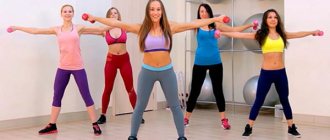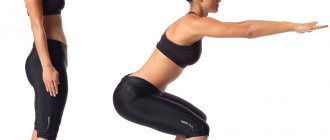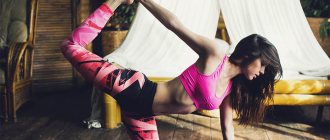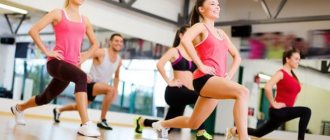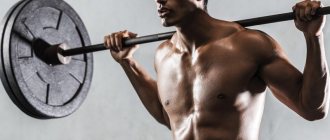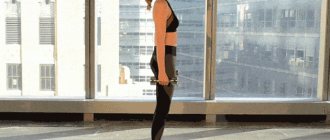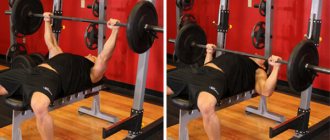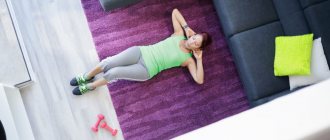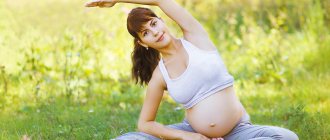Everyone knows this. A gymnastic mat is needed to protect against bruises during sports activities. For example, it must be placed under a children's sports complex.
But mats have uses that are not obvious. Thanks to these properties, gymnastic mats are an incredible success among children.
To train balance, parents usually decide to buy a hoverboard or roller board. But few people realize that you can train balance from birth with the help of a gymnastics mat.
Did you guess that a folding gymnastic mat is
- obstacle course tunnel
- house
- sofa
- puppet theater screen
- mattress
- drawing board
- trampoline
And the most amazing thing is that the gymnastic mat is a simulator for developing balance from birth.
Here are some exercises that require a gymnastics mat:
Sports gymnastic mats according to GOST
This GOST concerns sports gymnastic mats that are used during training and competitions in sports schools and other educational institutions, and contains safety standards for mats of types 1–8. The remaining mats (types 9–12 and intended for professional sports competitions at the international level) are not covered by this standard.
GOST defines the following terms, which are characteristics of a gymnastic mat:
- Shock absorption characteristics – the ability of the coating to deform from impact and elastically take the shape of the athlete’s body.
- Elasticity is the ability to give off mechanical energy in response to an impact.
- The top side is the surface of the gymnastics mat with which the athlete comes into contact while training.
- The underside is the surface of the coating facing the floor during operation.
Classification of gymnastic mats according to GOST:
All of the listed categories of mats are subject to requirements for shock-absorbing properties, deformation values, elasticity, and abrasion of the upper and lower sides.
Recommended articles to read:
- Wall-mounted horizontal bar for home: a simple but effective exercise machine
- Production of sports equipment, range and properties of products
- Flooring for the gym: types, characteristics, selection tips
Acceptable values of elasticity, shock absorption and deformation:
Safety standards for the depth of abrasion on both sides of the gymnastic mat:
In addition to meeting these parameters, any gymnastic mat must also have a clearly visible and indelible marking that is applied to the bottom surface of the product.
It should display:
- type of mat;
- this GOST;
- brand or manufacturer's name;
- year of manufacture of the product.
Fitness training for the whole body: mandatory steps
Training with any movements is a program of stress on muscles, ligaments, and internal organs.
That is why it is necessary to follow the sequence of training stages, which will help distribute the load as efficiently as possible and achieve the goals set during the planning process:
Necessary warm-up. The warm-up program includes certain movements aimed at pre-warming the muscle and ligamentous tissue, which determines the effectiveness of the technical reproduction of exercises.
Main working base. A software package consisting of a combination of activities that can vary in functionality and sequence of playback, and may differ in aerobic or strength exercises.
Cool down and consolidation. This stage is necessary to normalize the functioning of the cardiovascular, respiratory and other systems of the body; it helps to smoothly complete the training and maximize the results obtained.
The total duration of classes may not exceed 40-60 minutes, and it is important to fully reproduce all important stages.
Starting with the warm-up, it is recommended to gradually increase the load, which will have a positive effect on general strengthening processes, help you effectively lose excess weight and even gain muscle mass.
What are gymnastic mats made of?
Depending on the purpose of the gymnastic mat, the base material for it is selected:
- Furniture foam rubber is a soft material of varying densities. Children's gymnastic mats are made from foam rubber with a density of 22–25 kg/m2; designed for adult athletes - density 25–30 kg/m2. This filler does not tolerate sudden changes in temperature and moisture, so if storage conditions are not met, the foam mat becomes unusable within a few years.
- Foamed polypropylene is cheap and practical, which makes it widely used in various fields, from building houses to making sports equipment. Does not suffer from moisture. The permissible temperature range of this material is very large, from -80 °C to +80 °C. For the manufacture of gymnastic mats, foamed polypropylene with a density of 25–30 kg/m2 is used.
- Recycled foam rubber has high density. Due to its high cost, it is used only for the production of professional gymnastic mats (for big sports). For ordinary school gyms, such mats are purchased extremely rarely.
- Rubber. Sports rubber mats, varying in thickness and density, are very popular. Most often, outdoor sports grounds are covered with such products. This material is wear-resistant and remains intact at both high and low temperatures.
Obviously, the dimensions of gymnastic mats, like the material, are also determined by the purpose of the product. You can make a mat of almost any size.
Many properties of a gymnastic mat - durability, safety and ease of use - depend on its surface. The anti-slip coating must remain so even when wet from the sweat of athletes: situations should not be allowed when a person slips on the mat during a competition and loses it or gets injured during training.
As for sports equipment and supplies for schools, including gymnastic mats, they are subject to much more modest requirements. The main thing is that the cover is sufficiently durable. For schools, tent mats are usually purchased from PVC with soldered rather than stitched seams. Such products are reliable, last a long time and in any case pay for their low price.
FAQ
1. Aren’t you going to throw it? Now my site ranks 2nd in Russia among bodybuilding and fitness sites.
At this level of development, reputation is worth much more than a couple of thousand rubles. 2. Do you guarantee results? I cannot guarantee the result, since it depends on your age as much as on my plan. Even a trainer who trains you personally in the gym cannot guarantee you results. All I can guarantee you is to redo the plan if you don't like it. Or return your money if you feel that you did not receive any results.
3. How can I get a discount? No way. I don't give discounts. Firstly, I am confident in the quality of my services. And secondly, why should I give a discount if I already have enough orders.
4.How will your plan differ from those on the website? The plans on the site are designed for average people. We all know that every person is individual. Everyone has some characteristics of the body, or some diseases. I take all this into account in my individual plans.
5. What if you send everyone the same plans? I have already made hundreds of individual plans for every taste and color. When the next order arrives, I find in my file cabinet plans for people with similar parameters. I take the most suitable plan and “finish” it for the new person. That is, your plan may be similar to plans that I have already written to people with similar parameters. But in such a way that the plan completely coincides with the existing ones - this almost never happens. Simply, why reinvent the wheel when there is already a large selection of proven programs. But this doesn't always happen. If there is no similar plan, then I create the program from scratch.
6. How long does it take to draw up a plan? This usually takes a day. In rare cases - up to 2 days. Often, after I receive your letter, I may have clarifying questions. Then I start the plan after I get answers to these questions.
7. Are the details current? All money transfer options are up to date and work. Money can take 1-2 days only if you transfer it from one bank to another. In all other cases, the money arrives immediately.
A set of exercises on gymnastic mats for beginners
The functions of gymnastic mats are not limited to ensuring safety during training. Flooring is also used for gymnastics - in particular, for free exercises on mats. These exercises do not pose a danger even for children, and they bring very significant benefits to the body: they help strengthen the immune system, train the vestibular apparatus and muscles. Voluntary exercises using this equipment develop coordination of movements, agility, flexibility, muscle strength and confident control of one’s own body.
Gymnastic exercises on mats are a mandatory part of physical education lessons at school. Typically, a gymnastics program begins with a tuck, which, although not an independent exercise, is necessary in order to begin learning somersaults, jumps, rolls and somersaults. Therefore, physical education teachers make sure that all children practice the grouping skill before doing the rest of the exercises.
The set of exercises on the mats includes the following (popular and simple):
- Somersault forward. Squat down with your hands on the mat in front of your feet, shoulder-width apart. Transfer the weight of your body to your arms, bend them, while tilting your head to your chest, and perform a somersault.
- Somersault back. You need to group yourself, taking an emphasis, then move back a little, squatting slightly on the mat. Without changing your body position, roll back, straightening your spine.
- “Candle”, or stand on the shoulder blades. Lie with your back on a gymnastics mat, supporting your lower back with your palms (place your elbows parallel to each other), and slowly, carefully lift your legs with your knees bent. At the end of the exercise, they must be straightened so that the body forms a vertical line.
- "Bridge". This traditional gymnastic exercise is also done from a lying position with your back on a mat. Your knees should be bent shoulder-width apart, your palms should be turned back and rested on the mat. Raise your lower back until your body forms an arch, resting both ends - palms and feet - on the floor.
- Bend forward from a sitting position. Sit on the mat, put your hands behind your back and place them on the surface, lean on them. Bring your legs together. Lean your whole body forward.
- "Bike". To perform this exercise, lie on the mat so that your back and arms extended along the body lie on a horizontal surface. With your legs raised, make movements as if you were pedaling a bicycle (both limbs rotate, feet describe parallel circles).
- Rifles. Squat down on the mat, hug your knees with your hands, and roll alternately to the right and left. Make sure that your hands remain on your knees and support them, and that your head does not go back.
- "Boat". This gymnastic exercise, which has a beneficial effect on the back muscles, is performed from a lying position on the stomach. The limbs are extended: arms forward above the head, legs backward. They need to be simultaneously lifted off the mat and briefly lifted.
- “Ring” is another exercise for the lower back, similar to the “boat”. From a lying position on your stomach, you need to grab your ankles with your hands, and then begin to raise and lower your body.
- “Frog” is performed while sitting on a mat. You need to bend your knees, spread your legs to the sides so that your feet remain connected by the soles, then return to the starting position.
All of the listed gymnastic exercises on mats are performed several times. A parent or other adult should supervise your child when learning new tricks. By the way, gymnastics on mats is not exclusively a children’s activity; the whole family can do the exercises, and it will be useful and exciting.
With the help of children's gymnastic mats, you can train the youngest children, teaching them to maintain balance.
The following exercise program for newborns is recommended:
- Accelerate back and forth. Young children love this exercise, as does the fun sound the mat makes when sliding on it. Newborns quickly calm down and are in a good mood. A children's gymnastic mat is folded in half to make it stiffer and placed on the floor. The child should be placed face down on the mat perpendicular to the adult’s body (so that the baby’s head is directed towards one of the adult’s hands and the legs towards the other). You need to take the mat with your right hand and pull it so that it moves forward, and then with your left hand in the opposite direction so that it moves back.
- Acceleration left and right. This exercise is similar to the first, only the mat is rotated 90° so that the child faces the adult. The covering is moved first with the right hand to the right, then with the left hand to the left.
- Rotate the baby horizontally clockwise. The child should be placed on his stomach along the gymnastic mat so that his head is at the very edge. An adult takes the opposite end of the covering and twists the litter clockwise.
- Rotate counterclockwise. Everything is the same as in the previous exercise, only the direction of rotation of the mat is the opposite.
- Somersault forward. This exercise is suitable even for children under six months who have not yet learned to walk. The baby is carefully lowered onto a soft gymnastic mat upside down. One hand of an adult holds and bends the child’s head, the other supports his hips, helping him to somersault. This exercise can be done 10–15 times daily. It helps the child’s brain learn to distinguish between up and down and navigate in space when tumbling.
Reviews
Irina Kirsanova I am 48 years old. I ordered an individual training program for beginners to lose weight from Ilya. Exercises at home. Inventory includes a bench and dumbbells of different weights. 4 workouts per week. I'm happy with the result. After 6 weeks of training, I lost exactly the same amount of kilos as Ilya said when he compiled the program. Of course I had to sweat and count calories. The program is very clear and precise, Ilya promptly responded to questions that arose. In the future, I want to diversify the program and go for a 2 or 3 week training cycle with changing the number of repetitions and approaches. Since it’s difficult to figure out such a “dosage” of load on your own, and I already feel this is absolutely necessary. Thank you, Ilya! Elena Nikodaevich There is progress :)). I lost only 2 kilograms, but my volume decreased by several centimeters: in the waist by 8 cm and in the hips by 9.
